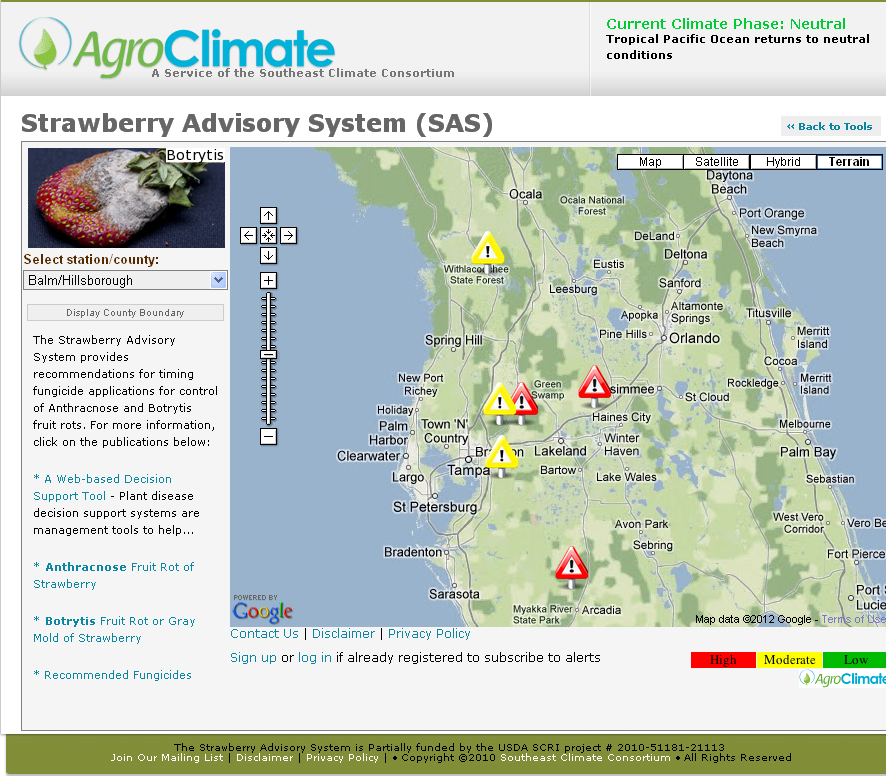When we think about agriculture, technology and the future there is one apparent truth—we will need to produce more with less. We are going to need to produce more food,with higher quality, closer to urban centers, with fewer agricultural inputs and impacts.
While my pieces on Science 2.0 usually center around the remedies offered by biotechnology today I present work from a colleague that brings a smile to my face every time I hear it. Drs. Natalia Peres and Clyde Fraisse of the University of Florida took on a daunting problem—how to decrease the amount of fungicide applied to Florida’s strawberry crop. Florida is the USA’s #1 winter strawberry producer, yet successful production means liberal use of fungicides to combat pathogen invasion in Florida’s warm, wet winters. This reality brings multiple levels of problems. Fungicides raise the cost of production, as farmers have to purchase the chemicals, along with the fuel and labor to apply them. Strawberry requires large amounts of fungicides that then are introduced to the environment. Finally, these compounds must be washed from the products by the consumers. Any efforts to cut fungicide application have tremendous benefits.
Traditionally farmers have sprayed on a regular schedule. Fungus or not, prophylactic sprays were thought to keep the pathogen at bay, protecting the valuable crop.
But Dr. Peres carefully noted incidence of fungal outbreaks and realized that the problems seemed to correlate with specific weather patterns. Cool wet mornings, recent precipitation and other variables seemed to foster an environment conducive to fungal outbreak.
Could a prescription for fungicide application cut the use of the chemicals, saving farmers money and limiting fungicide in the environment?
The Strawberry Advisory System was born.

On this website a farmer can check any of a number of weather stations in the Florida strawberry growing region and get a recommendation based on prevailing weather conditions. Farmers can also sign up to receive a text message based alert if conditions place the crop at risk, allowing them to time their applications. Check it out at agroclimate.org, go to 'tools' then 'strawberry advisory system'.
Does it work? Dr. Peres recently presented two years of data at the Agritech Conference in Plant City, FL. It turns out that over the last two years the incidence of anthracnose rots (Colletotrichum spp) and greymold (Botrytis sp.) were about the same as in previous seasons. However, with the Strawberry Advisory System farmers applied up to 60% less fungicide!
So being a huge fan of super-innovative, environmentally-friendly solutions I tip my hat to Dr. Peres. A good scientist is a great observer, and here her matching weather and disease pressure spawned a new way to predict and prevent plant problems, providing both environmental and economic dividends.
Similar systems are now going in nationwide and soon will be employed with other crops. Great news for the environment and decreasing the impacts of modern agriculture!




Comments